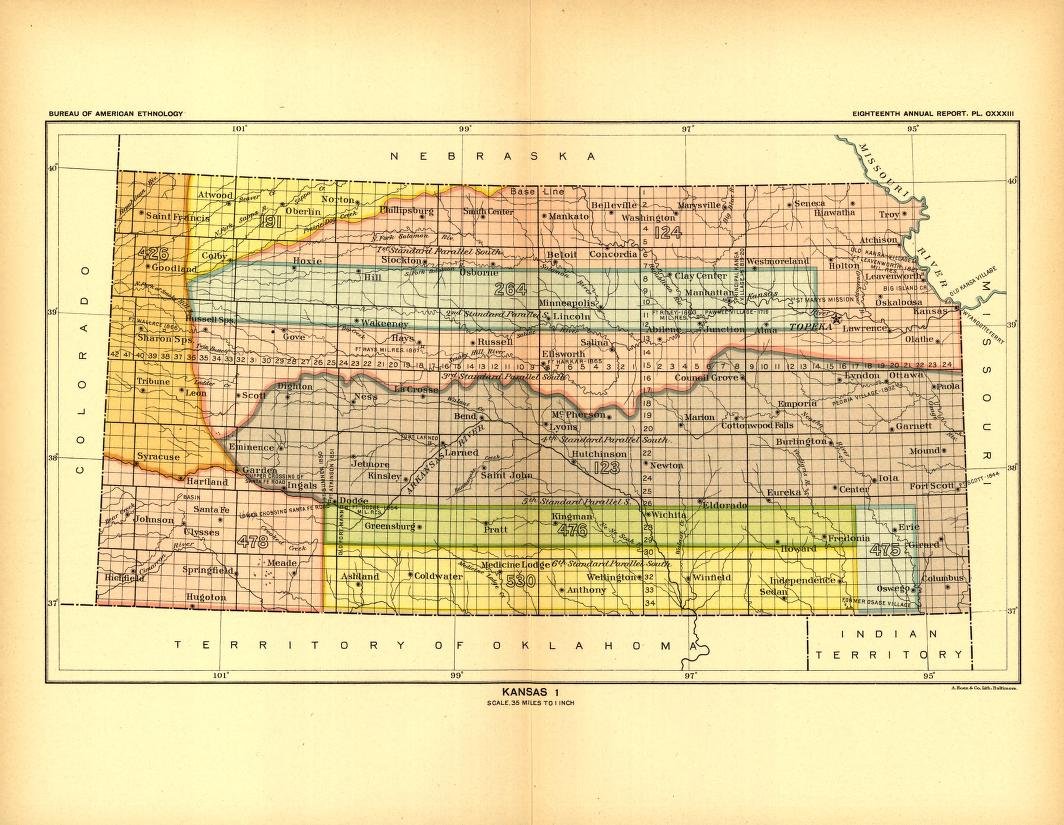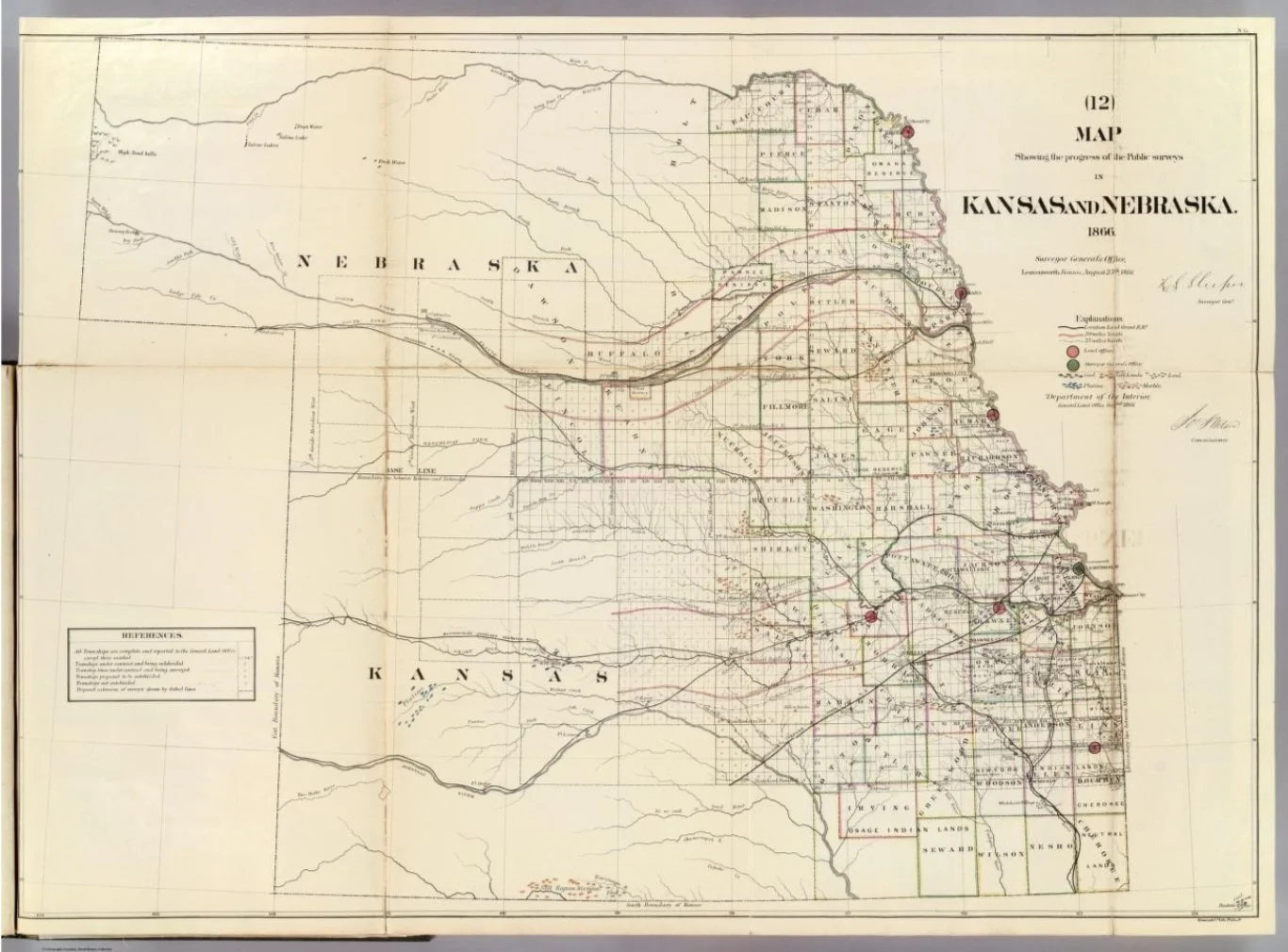Dominican Sisters of Peace
Heartland Farm | Rush County, KS
Land-history research for The Heartland Farm, 1049 CR 390, Pawnee Rock, KS 67567
Cover image from “DTIC ADA507749: The Corps of Engineers and Prairie Restoration: Synopsis of the First Corps Prairie Workshop, Follow-up Actions, and Thoughts on the Future of Prairie Restoration and Management on Operational Projects,” by U.S. Defense Technical Information Center (2009)
“Simon-François Daumont de Saint-Lusson,” rendering by Charles W. Jefferys (1934)
The Doctrine of Discovery in Rush County
European Contact
Chalk drawing of Captain Meriwether Lewis by Charles Balthazar Julien Févret de Saint-Mémin (1802)
Protect.
“The United States being anxious to promote peace, friendship and intercourse with the Osage tribes . . . and to protect them from the insults and injuries of other tribes of Indians . . . have thought proper to build a fort on the right bank of the Missouri, a few miles above the Fire Prairie, and do agree to garrison the same with as many regular troops as the President of the United States may, from time to time, deem necessary for the protection of all orderly, friendly and well disposed Indians of the Great and Little Osage nations[.]
Meriwether Lewis, Louisiana Territorial Governor and Superintendent of Indian Affairs, Treaty with the Osage (Nov. 10, 1808)
Settler Colonialization
The Treaty Period
Lithograph of Jean Pierre Choteau, Sr., by Clarence Linden Hoblitzelle (1897)
Disclaim.
In exchange for U.S. protection, the Osage “disclaim[] all right to cede, sell or in any manner transfer their lands to any foreign power…”
Jean Pierre/Pedro/Peter Chouteau, Sr., Agent for the Osage, Treaty with the Osage (Nov. 10, 1808)
Thomas Loraine McKenney, Charles Loring Elliott (1856)
Undisturbed.
“[I]t is the policy of the Government to guarantee them lasting and undisturbed possession.”
Thomas L. McKenney, Report of the Superintendent of Indian Affairs to the Secretary of War (Nov. 30, 1825)
Photograph of unidentified Osage men, artist unknown (c. 1860)
Surplus.
“The tribe of the Great and Little Osage Indians, having now more lands than are necessary for their occupation, and all payments from the Government to them under former treaties having ceased, leaving them greatly impoverished, and being desirous of improving their condition by disposing of their surplus lands, do hereby grant and sell to the United States the lands contained within the following boundaries….”
1865 Treaty with the Osage, 14 Stat. 687 (Sept. 29, 1865)
Map of Treaty Cessions by Charles C. Royce, Bureau of American Ethnology (1899)
Primary Sources
& Markups

Current Law
Land Becomes Property
Primary Sources
& Markups
“Map Showing the Progress of the Public Surveys in Kansas and Nebraska,” by Surveyor General’s Office” (Aug. 25, 1866)
“Spirit of Kansas,” oil painting by Mary Pillsbury Weston (1891)
Atchison, Topeka and Santa Fe Railway promotional brochure in Czech (c. 1880)
There’s more
Curated Resource List for the Dominican Sisters of Peace
For narrative nonfiction about the Osage Reign of Terror:
Read David Grann, Killers of the Flower Moon: The Osage Murders and the Birth of the FBI (Doubleday, 2017)
For a podcast exploring modern Osage identity:
Listen to Code Switch, Family, fortune, and the fight for Osage headrights (NPR 2023)
For Indigenous perspectives on U.S. history:
Read Ned Blackhawk, The Rediscovery of America: Native Peoples and the Unmaking of U.S. History (Yale University Press, 2023)
Read Anton Treuer, Everything You Wanted to Know about Indians But Were Afraid to Ask: Revised and Expanded (Minnesota Historical Society Press, 2023)
Share Roxanne Dunbar-Ortiz, An Indigenous Peoples' History of the United States for Young People (Beacon Press, 2019)
To learn more about Traders’ kinship and economic role in treatymaking:
Read Martin Case, The Relentless Business of Treaties: How Indigenous Land Became U.S. Property (Minnesota Historical Society Press (2018)
“Land Buyers Visit Satanta, Haskell County, Kansas” on the Atchison, Topeka & Santa Fe Railway by Francis Marion Steele (c. 1891)











